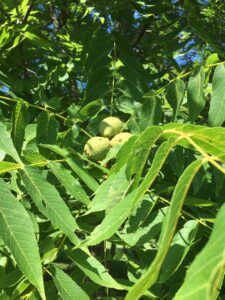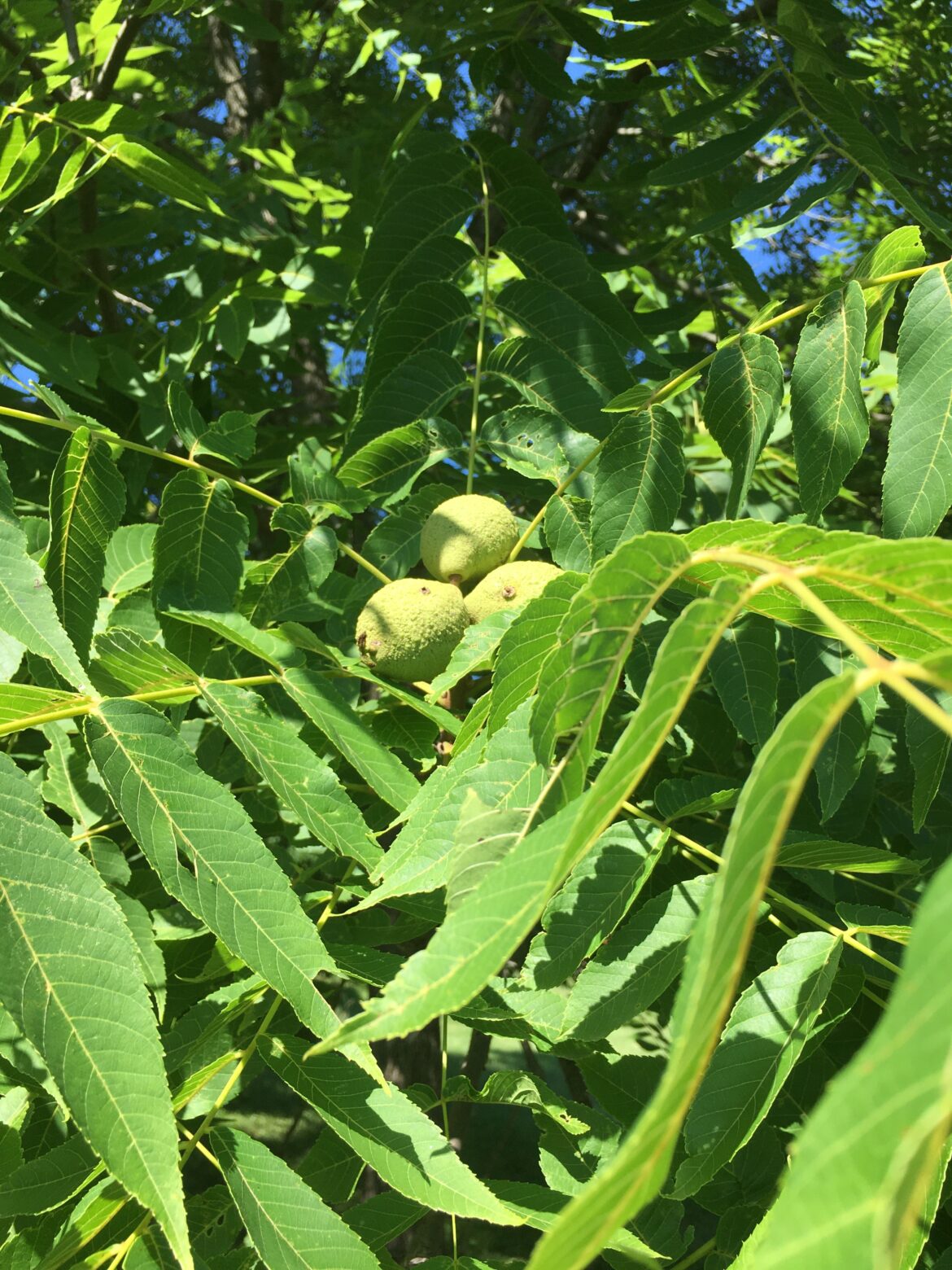July 9th
The 190th Day of the Year
Now is the high tide of the year,
And whatever of life hath ebbed away
Comes flooding back with a ripply cheer,
Into every bare inlet and creek and bay.
James Russell Lowell
Sunrise/set: 5:14/8:06
Day’s Length: 14 hours 52 minutes
Average High/Low: 85/64
Average Temperature: 74
Record High: 105 – 1936
Record Low: 50 – 1901
Weather
There is a ten percent chance of temperatures of 100 or above, 35 percent for 90s, fifty-five percent for 80s. Rain falls half the days in my record, but the sun appears for much of the time nine years in ten. Most nights are warm : 95 percent of them are in the 60s or 70s. And tonight begins a two-week period during which lows in the 50s occur less frequently than at any other time of the year.
Natural Calendar
Long, fresh, red seedpods hang from locust branches. Thistle down and tufts of meadow goat’s beard float across the fields. Among the many wildflowers, find golden showy coneflowers, pale blue campanula, purple coneflowers, monarda, germander, skullcap, fogfruit, great Indian plantain, fringed loosestrife, bouncing bets, daisy fleabane, moth mullein, leafcup, lopseed, butterfly weed, touch-me-nots, hobblebush, wood mint, tall bellflower, great mullein, small-flowered agrimony, tick trefoil, velvet leaf, trumpet creeper and jimson weed in bloom.
The Stars
In the eastern night sky, the stars of the Summer Triangle are moving into position for August. The easiest of these three stars to find is Deneb, which is the large “tail” star of Cygnus the swan (shaped like a large bird in flight, its long neck pointing to the south). To the right of Deneb lies Vega, the brightest star overhead these nights. The third corner of the triangle is Altair, below and about halfway between the other two corners.
Daybook
1981: The last raspberry picked today.
1983: Orton Trail in John Bryan Park: Wild petunia, Queen Anne’s lace, yarrow, tiger lilies, butterfly weed, teasel, moth mullein, daisies, cinquefoil, milkweed, thimbleweed, wild lettuce in bloom. Staghorn sumac fruits are red and velvety.
1984: Covered Bridge: Lopseed only about a week old, more buckeye trees turning. Lizard’s tail with flowers about ten days old, coneflower with small buds. Thistle down in the Dog Day breeze.
1985: Covered Bridge: Each year, certainty of great mullein and white vervain, monarda, yarrow, sow thistle, dayflower, enchanter’s nightshade, creeping bellflower, butterfly weed, Queen Anne’s lace, St. John’s wort, bouncing bet, cinquefoil, milkweed, wild lettuce, hobblebush, leafcup, lopseed, tall nettle, black-eyed Susan, lizard’s tail, thimbleweed. In the greenhouse, mother-in-law’s tongue and aloe are sending up flower spikes.
1986: Pair of quail and a rare indigo bunting seen. The first woolly bear caterpillar crossed the road near Wilberforce.
1989: Grackles cackle in the back trees, cardinals quiet, sparrows loud. Last pint of black raspberries picked. Mother-in-law’s tongue full bloom.
1993: First cicada heard today. Swallowtails haven’t been to the garden since the sweet Williams died back. Very first red phlox flower opens along the north hedge, first rose of Sharon noticed. Euclea delphinii, small brown moth with emerald green markings, found in the car, identified from Holland’s Moths.
1995: The first rose of Sharon opened yesterday. Mid-season hostas have been in bloom three to five days.
1996: The first pink phlox flowered in the south garden today. The days continue cool. It’s the mildest July that I remember.
1997: The roses completed their first phase of flowering last week, now lie dormant just as the Japanese beetles emerge.
1998: The Asiatic lilies have been done blooming for a week or more now; the Orientals, yellows and oranges, take their place. The gooseneck has been flowering since the first of the month, and the showy coneflowers have been opening for the past few days. Gay feather, purple coneflowers, heliopsis and the pond’s purple loosestrife are in early full bloom. Red and violet monardas, like the daylilies, seem to be past their peak. Every primrose is gone, and the mallow thins quickly. Daisy fleabane holds on late, the leaves at its base weathering. This morning, no chorus of robins heard, only the doves and cardinals.
2000: Red monarda is still full and strong. In the pond, the three-petaled, small water plantain has started to open in the afternoons, stays open through dusk. Hollyhock foliage now badly disfigured by leaf miners.
2001: The big blue hosta is done flowering now, but the south garden is in full bloom, zinnias dominating the yard, purple loosestrife overrunning the pond. One Osage fruit, about a third developed, found in the grass.
2002: On the road in central Canada: Brome, timothy, rye grass, Canadian thistles, pink-flowered spurge, fireweed all in bloom.
2003: The barometer always seeks its center, searching, it seems, for equilibrium. Do the ocean tides seek neither the highs nor the lows, but rather balance? And do I?
2005: The morning bird chorus is softer. By a 4:45, the robins are still singing, but far fewer of them than a month ago. Cardinals and doves call, but the Early Summer excitement is gone.
2006: Cardinals strong this morning from 4:18 on. Robins soft but still there. Doves come in before 5:00. First cicada of the summer heard this afternoon. Gall noticed on a goldenrod plant; how early do they come?
2007: Returned from a four-day trip to Madison, Wisconsin, a last family hurrah before Maggie and Mike leave for Ecuador – and Rachel for the Marshall Islands. Landscape very uniform throughout with the exception of full bloom parsnips in Wisconsin and wheat fields still uncut (the dividing line seems to be about Rockford). Some cornfields are tasseling in the north as well as near Yellow Springs. Thistledown everywhere, but a few patches of Canadian thistles are still purple.
In Madison, where the heat has been as unseasonably warm as here, the gardens are about at the same stage as those at home, with lilies in full flower, and Joe Pye even a little ahead of ours. When we got home, I found our purple phlox and the three-petaled water plantain in bloom, rose of Sharon becoming widespread.
2008: Violet phlox now blooming beside the early, all-summer red phlox – two different seasons, so close in structure and color. Yellow June primrose season has ended. Japanese beetles have suddenly disappeared from the garden.
2009: No robin chorus in the yard this morning, only cardinals and doves about ten to six. Clucking starlings and blackbirds in the back trees around 9:00. Yellow-bellied woodpecker called at 9:30. Mateo’s and Moya’s rose of Sharon seen in bloom. Small buds on the tall coneflower in the alley. A pale violet shade spreads across the ancient garlic mustard foliage.
Inventory in the yard: full hostas, late astilbes (some withering), late full monarda, last of the pink spirea, very early rose of Sharon, 34 different daylily plants in bloom, 13 oriental/Asiatic lilies flowering, including the tall, yellow tree lilies (47 in all!). Oakleaf hydrangea greening, full heliopsis, Shasta daisies, Queen Anne’s lace, mallow, larkspur, veronica, daisy fleabane, gooseneck, purple coneflowers, red phlox. Late lizard’s tail, catmint, weak spiderwort, spotty roses. A few flowers on the Endless Summer hydrangeas, full but wilting Anna Belle hydrangea. Burs formed on the avens. Two wheat fields, just cut, seen along Dayton-Yellow Springs Road.
2011: A few wheat fields cut. One bright yellow sulfur butterfly stays in the garden through much of the day. Many hummingbird moths in the monarda. Yellow-and-black Italian bees at the red hummingbird feeder. Young raccoons killed on the highway. Ducklings, maybe a couple of weeks old, run over near the mall.
2012: At 5:00 this morning, the sparrows had taken up a rhythmic, pulse-like chirping. Cardinals and robins heard in the background, but very weak. Tree frogs after sunrise, purring and rattling, shrill crickets after sundown, then katydids after dark. More groups of starlings noticed as I drove back from Dayton.
Tat writes from Wisconsin: “The tulip tree is thriving, your geraniums are bowed with blooms, the giant ferns you gave me my first spring here are huge, spreading across the side yard. The flag iris have taken over the right side of the back — I’m going to split and share them lavishly this fall; the daylilies are all over everything, in deep reds, golds, pinks. I need smaller ones and am going to look.”
2013: Mid-season hostas with their blue flowers are at their peak now, but the orange ditch lilies are closing out their season. More and more rain, yard flooded again. First chirping fall field cricket heard along Lawson Street at 7:50 this morning when I walked Bella, the soft purring of the thrips or tree crickets in the background. Thirty different lily plants blooming this afternoon, the best so far this summer. The very first violet phlox opened, even though the plants were covered in bindweeds. John Blakelock reported the first cicada of the year at 9:00 p.m., just before the derecho winds came through to sweep things clean.
2014: Twenty-six lilies this morning, some fading, some coming in. Mid-season hostas full blue. Lizard’s tail long gone to seed. Monk, the cat, caught another baby robin, the mother screaming and diving at him. I took the bird, seemingly unhurt, from his mouth and let it go in the grass, took Monk inside. I think the fledgling made it.
2015: More rain. The bee balm has collapsed as if the local deer had slept in the huge clump of flowers. The lilies hold, undamaged, however: forty-five different plants this morning. Two ditch lily buds remain in the northwest drift. Don’s ditch lilies have a few more flowers and buds.
2016: Seventy lily plants in bloom today, a new record (Jeanie would be happy.) and the north garden zinnias next to the house are in full-flower, as well. Hickory nuts noticed on the path at St. Clare Monastery near Cincinnati.
2017: One hundred sixty-two day lily and six ditch-lily blossoms counted today, the most this season. The early large-leafed hostas in the yard have lost most of their flowers. Only four zinnias open so far. Jill’s butterfly bush has two branches with buds. Coneflowers of all kinds open throughout the village gardens. Several small ripe blackberries on a bush at the corner of High and Davis. My bee-balm full of honeybees and carpenter bees in the sun. Joe Pye buds are blushing now, started a few days ago. Burdock budded at the Gorge. Jill heard the first cicadas there – after she had found a cicada ecktoskeleton just this morning.
2018: One hundred seventy-four day lilies, four Asiatics, nine ditch lilies, zinnias now at early bloom, heliopsis starting to provide background, first white “alba” morning glory opened in the night. At nine thirty this morning: one spicebush butterfly, one monarch, one zebra swallowtail and one very large male tiger swallowtail roaming the north garden lilies and milkweed.
2019: One hundred seventy-seven day lily blossoms, 53 ditch lilies, 2 tree lilies this morning. And the hummingbird moth was back (from years ago).
2020: Pokeweed and elderberries have green berries. One hackberry butterfly, one red admiral, one blue. But this has been a very, very slow year for butterflies. Black walnuts almost full size. Lily count: 203 day lily, three Asiatic and 40 ditch lily blossoms. This evening at Ellis Pond, a small flock of robins was feeding on the green. As their chirping weakens in the honeysuckles, do they begin to gather once again, prelude to their August and September retreat?
Don’t move. Stay still. Once you find a place that feels halfway right and it seems time, settle down with a vow not to move any more. Take a look at one place on earth, one circle of people, one realm of beings over time.
Gary Snyder


